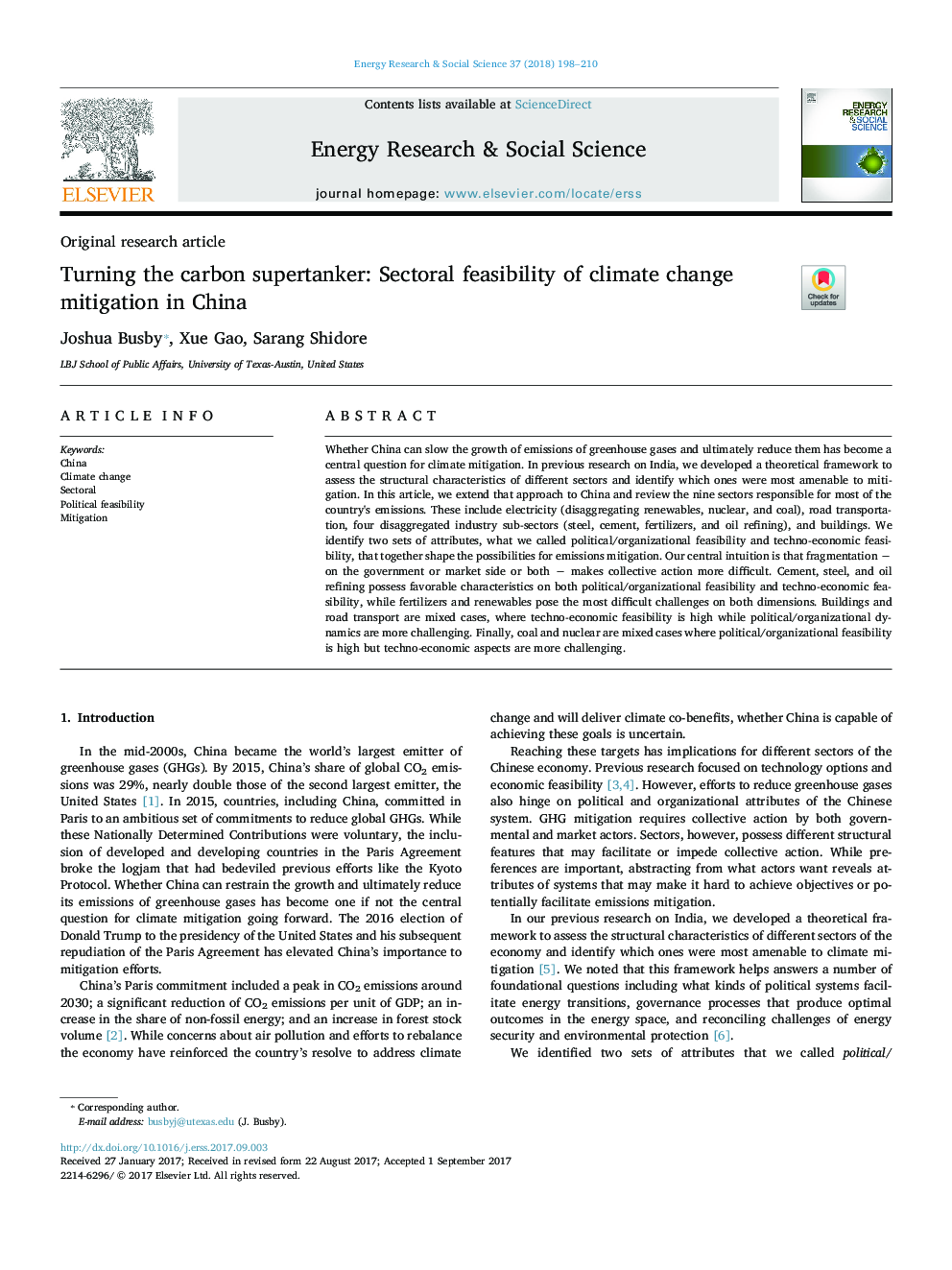| Article ID | Journal | Published Year | Pages | File Type |
|---|---|---|---|---|
| 6557701 | Energy Research & Social Science | 2018 | 13 Pages |
Abstract
Whether China can slow the growth of emissions of greenhouse gases and ultimately reduce them has become a central question for climate mitigation. In previous research on India, we developed a theoretical framework to assess the structural characteristics of different sectors and identify which ones were most amenable to mitigation. In this article, we extend that approach to China and review the nine sectors responsible for most of the country's emissions. These include electricity (disaggregating renewables, nuclear, and coal), road transportation, four disaggregated industry sub-sectors (steel, cement, fertilizers, and oil refining), and buildings. We identify two sets of attributes, what we called political/organizational feasibility and techno-economic feasibility, that together shape the possibilities for emissions mitigation. Our central intuition is that fragmentation â on the government or market side or both â makes collective action more difficult. Cement, steel, and oil refining possess favorable characteristics on both political/organizational feasibility and techno-economic feasibility, while fertilizers and renewables pose the most difficult challenges on both dimensions. Buildings and road transport are mixed cases, where techno-economic feasibility is high while political/organizational dynamics are more challenging. Finally, coal and nuclear are mixed cases where political/organizational feasibility is high but techno-economic aspects are more challenging.
Related Topics
Physical Sciences and Engineering
Energy
Energy (General)
Authors
Joshua Busby, Xue Gao, Sarang Shidore,
